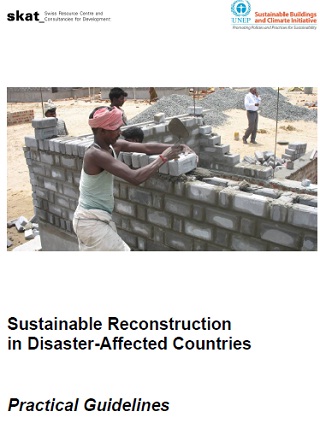Sustainable Reconstruction in Disaster-Affected Countries - Practical Guidelines
Publication Date: 2012
In 2007, Skat – Swiss Resource Centre and Consultancies for Development – in partnership with Sustainable Building and Climate Initiative (SBCI) of UNEP – United Nations Environment Programme – developed guidelines for integrating measures for more sustainable reconstruction efforts following the Indian Ocean tsunami, and published After the Tsunami – Sustainable Reconstruction Guidelines for South-East Asia.
Since then, a more generically applicable version of the Guidelines has been in high demand. Disasters such as the 2008 Sichuan earthquake in China, the massive earthquake that struck the Caribbean nation of Haiti in January 2010, which resulted in up to 80 per cent of the buildings in the epicentre being destroyed, as well as the tsunami and earthquake hitting north-eastern Japan with devastating consequences in early 2011, only reinforce the urgent need to provide such assistance. This report is a response to that need for a set of general guidelines.
In post-disaster settings, the urgency and scale of the need for shelter poses a tremendous challenge. These practical guidelines provide guidance regarding the key aspects of sustainable reconstruction.
The guidelines focus mainly on the reconstruction phase, in particular on permanent housing. Yet, the manual can be applied in some aspects also to the early recovery phase and the provision of transitional shelter. The manual takes into account, also, risk-reduction measurement in order to prepare for any upcoming disaster.

Log in with your EU Login account to post or comment on the platform.